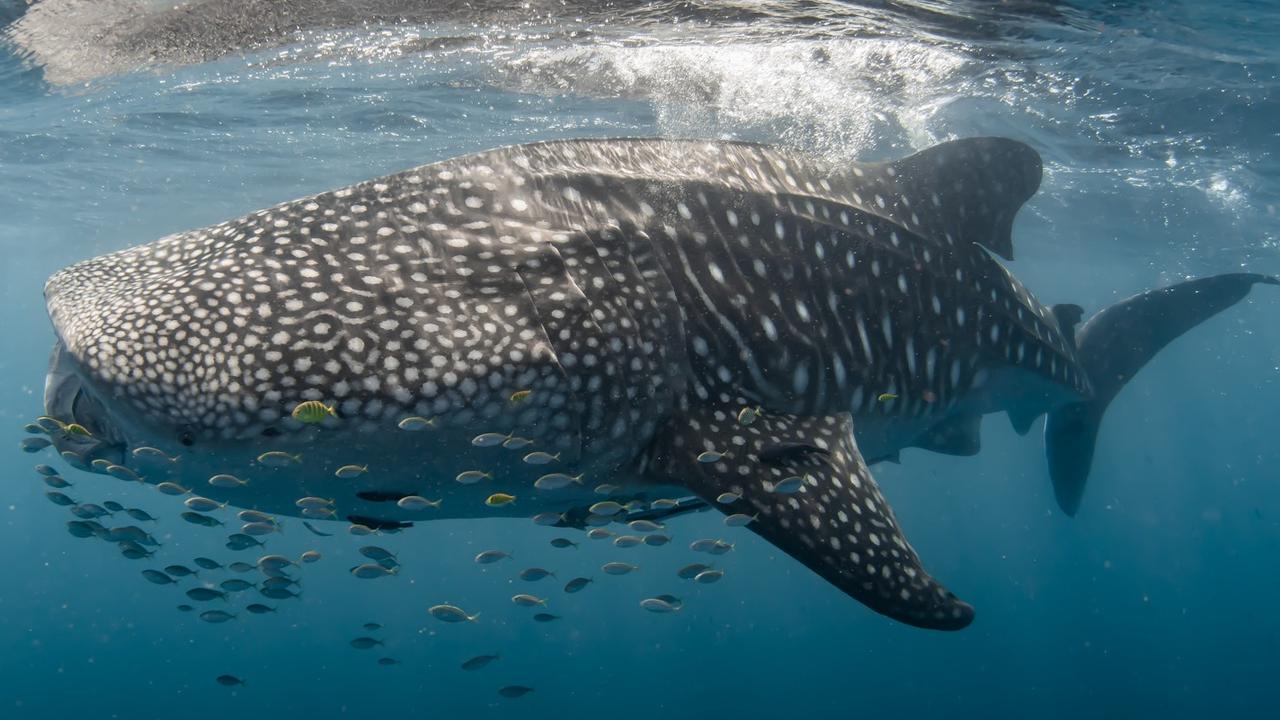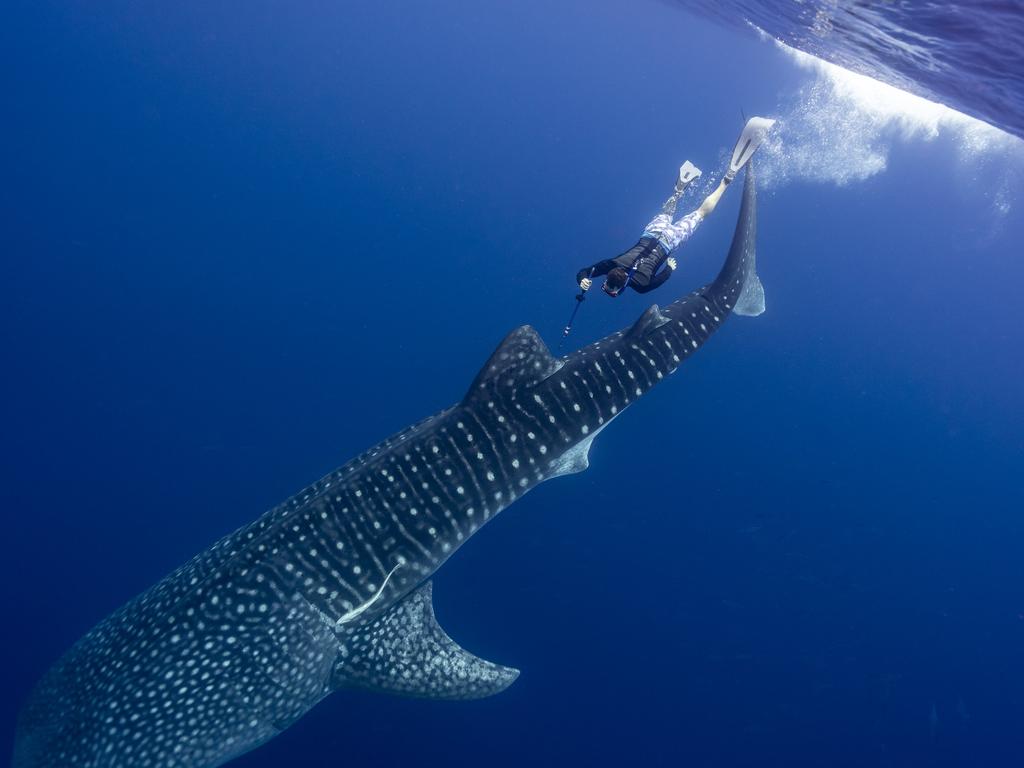Shark and ray species blow scuba diving depths out of the water
A massive global marine study sheds light on dark ocean depths scuba divers have never reached with the discovery that vertical movement of some shark and ray species plunges up to 2km down

READING LEVEL: GREEN
Sharks can dive to depths of nearly 2km, some six times lower than the deepest scuba dive, a global study reveals.
Led by the Zoological* Society of London and Stanford University’s Hopkins Marine Station, a global team of 171 researchers at 135 institutions around the world fitted hundreds of tracking tags on 38 species of sharks and rays.

Gathering a wealth of knowledge from Australia’s diverse* marine life, Flinders University Professor and co-author Charlie Huveneers said the immense scale of the study allowed for a breakthrough* in understanding the animals.
“This is the first time such a large amount of data on the vertical* movements of sharks and rays has been put together,” Professor Huveneers said.
“Our collaborative* team put together 96,169 days of data from 989 sharks and rays (to) tell us about how they use the ocean.”

The study reflects a breakthrough in methodology*, mapping the movement of the animals along a different axis* to focus on movement vertically through the depth of the ocean as well as horizontally* across it.
It found that while 26 of the 38 species surveyed spent 95 per cent of their time less than 250m from the water’s surface, 13 species were found to dive more than 1km beneath the surface.
Whale sharks were seen to dive to depths of 1896m, while the deepest-diving ray recorded was the sicklefin devil ray, which reached a depth of 1637m.

Professor Huveneers said the study’s aim was to understand the depths the animals move at, in order to prevent sharks and rays being accidentally caught by commercial fishing operations.
“We’re lucky in Australia that most of our commercial fisheries are relatively well-managed, and that many of the shark and ray species threatened with extinction* in other parts of the world are safe here, but some shark and ray populations are at risk of extinction in Australia,” he said.
“Our increased knowledge of their depth use will help managers better understand and mitigate* threats.”

ZSL Institute of Zoology co-lead author of the study, Dr David Curnick, said he hoped the wealth of knowledge provided by the results served as a breakthrough for taking care of the animals.
“Knowing just how deep some species dive – or don’t dive – will help us inform much-needed conservation* plans for these species and their relatives,” Dr Curnick said.
“It will also help us understand how these animals are likely to respond to the predicted climate-induced* changes to our oceans.”
GLOSSARY
- zoological: scientific study of animals
- diverse: having a great deal of variety and difference
- breakthrough: important discovery or event that improves something or answers a problem
- vertical: at right angles to the horizon, a line or direction rising straight up or down
- collaborative: two or more people or organisations working together for a common purpose
- methodology: system of ways of doing, teaching, or studying something
- axis: real or imaginary straight line dividing a symmetrical object in two
- horizontal: flat or level, parallel to the ground or the line of the horizon
- extinction: when a species dies out and ceases to exist
- mitigate: reduce the impact, make something less severe or serious
- conservation: careful preservation and protection of animals and natural resources
- induced: persuade someone to do something or cause something to happen
EXTRA READING
Great white sharks in growth spurt
Shark cam captures life and death struggles
Great Barrier relief as coral returns
QUICK QUIZ
- How many days of data did researchers collect?
- How many sharks and rays were tagged and studied?
- How many species were found to dive 1km or more below the surface?
- How deep did whale sharks dive?
- What is the unusual name of the deepest-diving ray?
LISTEN TO THIS STORY
CLASSROOM ACTIVITIES
1. Marine animals and where they live
How amazing that sharks can dive up to 2000m (2km) below the ocean’s surface. Lots of other marine life base themselves at different depths. Using the information below, create a colourful and informative diagram showing the different marine animals, different hazards and the different ocean depths at which they live.
Scuba diver – 20-40m
Orca – 60m
Whale shark – 70m
Pro scuba diver – 100m
Giant octopus – 100-200m
Giant oarfish – 200m
Blue whale – 500m
Giant squid – 946m
White shark – 1280m
Trawl fishing nets – 1500m
Whale sharks – 1896m
Sperm whale – 2250m
Deep sea coral reefs – 3000m
Titanic sunken ship – 3800m
Anglerfish – 4500m
Shrimps, invertebrates, microbes – 7600m
Time: allow 30 minutes to complete this activity
Curriculum Links: English; Science; Critical and Creative Thinking
2. Extension
What other threats may exist to marine life at all different depths of the ocean?
How could you use the information from the study reported in the Kids News article to help protect threatened marine life species?
Time: allow 15 minutes to complete this activity
Curriculum Links: English; Science; Critical and Creative Thinking
VCOP ACTIVITY
I spy nouns
Nouns are places, names (of people and objects), and time (months or days of the week).
How many nouns can you find in the article?
Can you sort them into places, names and time?
Pick three nouns and add an adjective (describing word) to the nouns.

